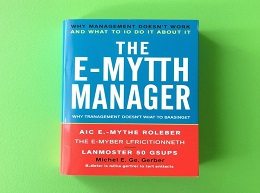Venture Capitalists at Work: How VCs Identify and Build Billion-Dollar Successes

Venture Capitalists at Work: How VCs Identify and Build Billion-Dollar Successes - A Comprehensive Review
"Venture Capitalists at Work: How VCs Identify and Build Billion-Dollar Successes" by Tarang Shah and Sheetal Shah offers an insider's view into the world of venture capital (VC). Through a series of interviews with some of the most successful venture capitalists, the book reveals the strategies, principles, and nuances that VCs use to identify, fund, and grow startups into billion-dollar companies. This review will delve into the book’s key insights, highlight compelling examples, and discuss the broader implications for entrepreneurs and investors.
Inside the World of Venture Capital
The venture capital industry is a critical engine for innovation and economic growth. VCs provide not just funding, but also strategic guidance, networking opportunities, and operational support to startups. "Venture Capitalists at Work" sheds light on how VCs think and operate, providing valuable lessons for anyone involved in the startup ecosystem.
The Art of Identifying Promising Startups
One of the core functions of a VC is to identify startups with the potential to become market leaders. This process involves evaluating the market opportunity, the team, the product, and the business model.
Market Opportunity: Size and Growth Potential
VCs look for markets that are large and growing, with significant unmet needs that a startup can address.
Example: Google
When Sequoia Capital invested in Google, the search engine market was still in its early stages, but it had enormous potential. The unmet need for efficient and effective search capabilities in a rapidly expanding internet landscape presented a massive market opportunity.
The Founding Team: Vision and Execution
The quality of the founding team is often considered the most critical factor in a startup’s potential for success. VCs look for founders who are passionate, resilient, and capable of executing their vision.
Example: Airbnb
Sequoia Capital’s investment in Airbnb was heavily influenced by the tenacity and vision of its founders, Brian Chesky, Joe Gebbia, and Nathan Blecharczyk. Despite facing numerous challenges and initial skepticism, the founders demonstrated exceptional commitment and adaptability.
The Product: Innovation and Differentiation
A startup’s product must offer something innovative and differentiated from existing solutions. VCs evaluate whether the product solves a real problem in a unique way.
Example: WhatsApp
WhatsApp’s simple, user-friendly messaging platform offered a cost-effective alternative to traditional SMS services. Sequoia Capital recognized the app’s potential to disrupt the global communications market due to its innovative approach and rapid user adoption.
Building Billion-Dollar Successes: The VC’s Role
Beyond identifying promising startups, VCs play an active role in building them into successful companies. This involves providing strategic guidance, facilitating key partnerships, and helping navigate challenges.
Strategic Guidance: Mentorship and Expertise
VCs bring extensive industry experience and strategic insights that can help startups refine their business models, scale operations, and enter new markets.
Example: LinkedIn
Reid Hoffman, co-founder of LinkedIn, benefited from the strategic guidance of Greylock Partners. The firm’s expertise in network effects and growth strategies helped LinkedIn expand its user base and monetize its platform effectively.
Networking and Partnerships: Opening Doors
VCs leverage their extensive networks to connect startups with potential customers, partners, and key hires. These connections can be crucial for growth and market penetration.
Example: Stripe
Andreessen Horowitz’s investment in Stripe provided more than just capital; it opened doors to major customers and strategic partners. This support was instrumental in Stripe’s rapid growth in the competitive payments industry.
Navigating Challenges: Crisis Management
Startups inevitably face challenges, from technical issues to market shifts. VCs help navigate these crises by providing support and resources to overcome obstacles.
Example: Slack
Slack, initially a gaming company called Tiny Speck, pivoted to a team communication tool with the support of its investors. The ability to navigate this significant pivot, guided by insights from VCs like Andreessen Horowitz, was key to Slack’s success.
Patterns of Success: Common Traits of Billion-Dollar Startups
The book identifies several patterns and traits common among billion-dollar startups. These insights can help entrepreneurs and investors understand what it takes to build a highly successful company.
Visionary Leadership
Billion-dollar startups often have visionary leaders who can see beyond immediate challenges and drive the company towards a long-term goal.
Example: Tesla
Elon Musk’s vision for Tesla went beyond creating electric cars; he aimed to revolutionize the entire automotive industry and promote sustainable energy. This long-term vision has been a driving force behind Tesla’s growth and success.
Focus on User Experience
Successful startups prioritize user experience, ensuring that their products are intuitive, reliable, and delightful to use.
Example: Instagram
Instagram’s focus on simplicity and visual appeal attracted millions of users rapidly. The founders’ dedication to delivering a superior user experience was a key factor in the platform’s explosive growth and eventual acquisition by Facebook.
Scalability
Billion-dollar startups design their products and business models to scale efficiently, allowing them to grow rapidly without proportional increases in cost.
Example: Dropbox
Dropbox’s cloud storage solution was designed to scale effortlessly with increasing numbers of users. This scalability, combined with a freemium model that encouraged widespread adoption, enabled Dropbox to grow quickly and dominate the cloud storage market.
The Evolving Landscape of Venture Capital
The venture capital industry itself is evolving, with new trends and dynamics shaping the way VCs operate and invest.
Rise of Micro VCs and Angel Investors
The rise of micro VCs and angel investors has democratized access to early-stage funding, enabling a broader range of startups to secure the initial capital they need to grow.
Example: SeedInvest
SeedInvest, a platform for equity crowdfunding, allows startups to raise funds from a diverse pool of investors. This model has opened up new opportunities for early-stage companies to attract capital and gain traction.
Globalization of Venture Capital
Venture capital is no longer confined to Silicon Valley. VCs are increasingly looking for opportunities in emerging markets and international startups.
Example: Flipkart
Tiger Global’s investment in Flipkart, an Indian e-commerce giant, highlights the globalization of venture capital. By identifying promising opportunities in emerging markets, VCs can tap into new growth avenues and diversify their portfolios.
Key Takeaways for Entrepreneurs and Investors
"Venture Capitalists at Work" offers a wealth of insights for both entrepreneurs and investors. For entrepreneurs, understanding what VCs look for and how they can add value can significantly enhance their chances of securing funding and achieving success. For investors, the book provides a blueprint for identifying and nurturing high-potential startups.
For Entrepreneurs
- Know Your Market : Demonstrate a deep understanding of your target market and its potential.
- Build a Strong Team : Assemble a team with complementary skills and a shared vision.
- Focus on Innovation : Develop a product that offers unique value and addresses a real problem.
- Be Resilient : Prepare to navigate challenges and pivot if necessary.
For Investors
- Evaluate the Team : Look for passionate, capable founders with a clear vision.
- Assess Market Potential : Invest in startups targeting large, growing markets.
- Add Value Beyond Capital : Provide strategic guidance, connections, and support.
- Embrace Global Opportunities : Explore investments in emerging markets and diverse geographies.
By applying these principles, both entrepreneurs and investors can increase their chances of building and backing the next billion-dollar success. "Venture Capitalists at Work" is an essential read for anyone involved in the startup ecosystem, offering timeless lessons and actionable insights into the world of venture capital.













